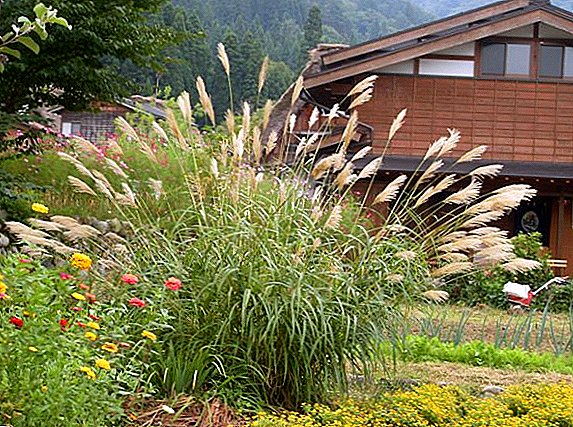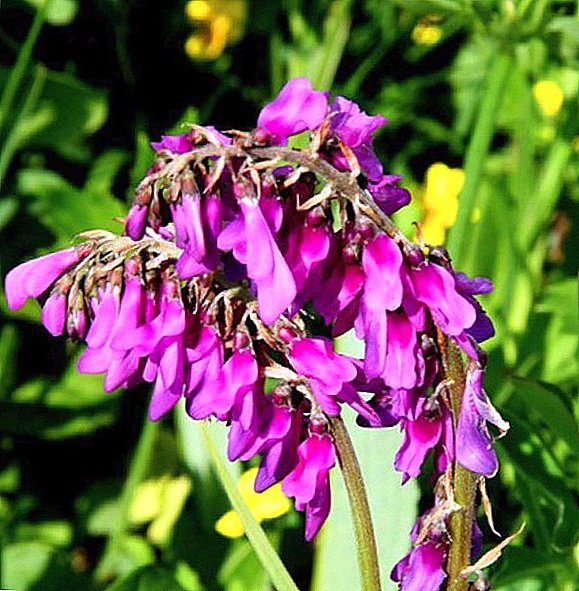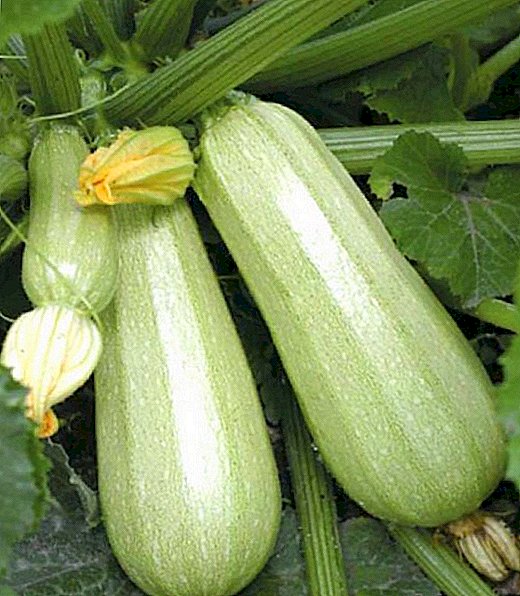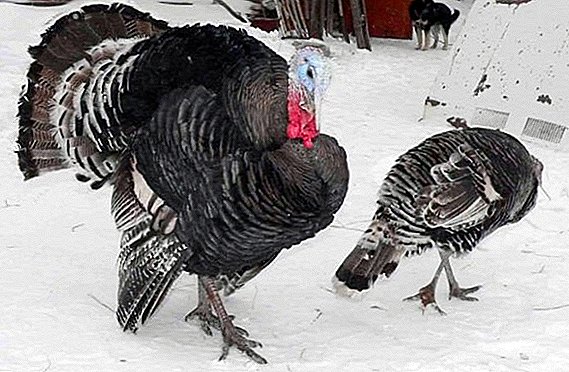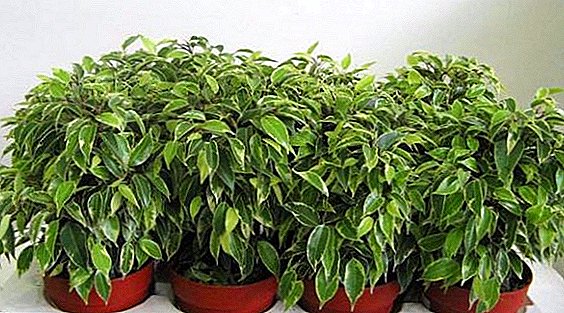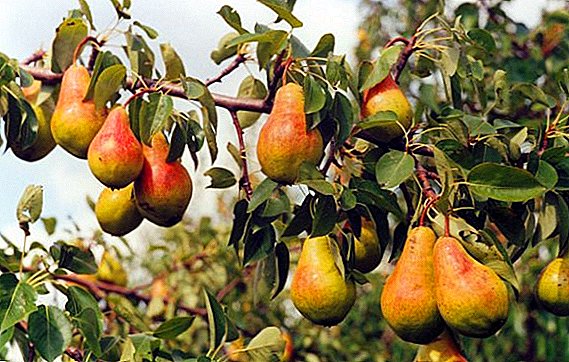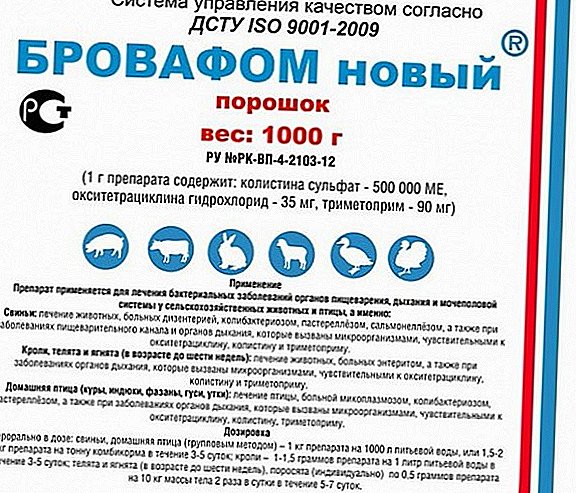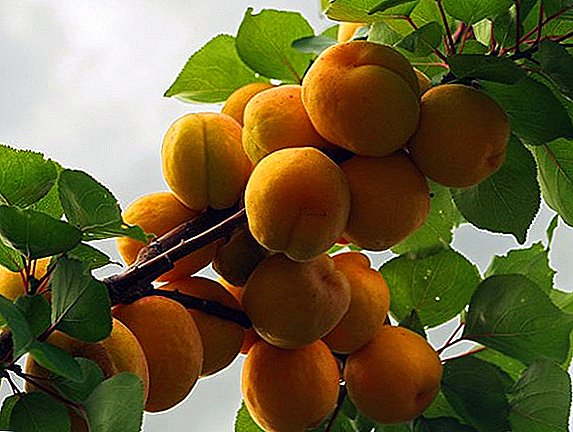 Armenia is considered the birthplace of sweet apricot. It has long been grown in India and China. Thanks to globalization, this amazing fruit has spread across the globe. Apricot is a disease-resistant tree, but in our climatic conditions it can be affected by various fungal diseases. Therefore, growing an apricot tree in your garden, you need to prepare for the fight against diseases of this culture. Below are the most common diseases of apricot and their treatment methods.
Armenia is considered the birthplace of sweet apricot. It has long been grown in India and China. Thanks to globalization, this amazing fruit has spread across the globe. Apricot is a disease-resistant tree, but in our climatic conditions it can be affected by various fungal diseases. Therefore, growing an apricot tree in your garden, you need to prepare for the fight against diseases of this culture. Below are the most common diseases of apricot and their treatment methods.
Monilioz
Moniliasis or fruit rot is a disease caused by the marsupial fungus monilia. It is among the most devastating diseases of stone fruit. By the nature of the manifestation, two main forms of moniliosis are distinguished: monilial burn and gray fruit rot. Consider protecting apricot against these fungi.
Monilial burn
Apricot tree flowering occurs in March, and the harvest is collected in July-August. Monilial burn is a common spring form of moniliosis. Unusually warm winters are considered to be the causes of this disease, since at low temperatures all moniliosis pathogens usually die. An outbreak of monilial burn on apricot trees occurs during the period of apricot flowering, in rainy and damp weather (fogs and dew).
Signs. The symptom of a monilial burn is flower rot.  The habitual color of the petals changes to brown. In this case, the wood turns brown and then quickly dies off. This is due to the penetration of the pathogen into the open bloom through the pistil of the flower. As a result, the entire floral part of the tree dries out. With the strong development of the disease, the fungus infects young shoots. This leads to the decay of a number of branches of the tree; leaves begin to hang, later they turn brown and hard. Usually the leaves do not fall to the ground, they remain on the branches until the next spring. Cracks appear on thick branches, which then turn into wounds with intense gum secretion. The tree looks like it has been burned by fire. After some time, the apricot may die completely.
The habitual color of the petals changes to brown. In this case, the wood turns brown and then quickly dies off. This is due to the penetration of the pathogen into the open bloom through the pistil of the flower. As a result, the entire floral part of the tree dries out. With the strong development of the disease, the fungus infects young shoots. This leads to the decay of a number of branches of the tree; leaves begin to hang, later they turn brown and hard. Usually the leaves do not fall to the ground, they remain on the branches until the next spring. Cracks appear on thick branches, which then turn into wounds with intense gum secretion. The tree looks like it has been burned by fire. After some time, the apricot may die completely.
Fight against the disease. At the first signs of a monilial burn, it is very important to remove all diseased parts of the plant. This can stop the spread of the disease on the shoots. After 2 - 3 weeks after flowering, repeat the procedure. The manifestation of the disease is possible in the form of rotting fruit. It is necessary to collect and destroy all rotten fruit. Against a monilial burn, spraying with a 3% Bordeaux liquid or 0.9% copper oxychloride is effective. Do not neglect whitewashing, do it at the end of autumn - before the onset of cold weather.
Fruit Gray Rot
Fruit rot is a summer variety of moniliosis, which develops in wet weather during the last weeks before the apricot harvest. This is the most common disease of apricot, the fruit of the fruit is literally rotting, forming a brown rot and white mold.
Signs of illness. First, a small light brown spot appears on the apricot, which then expands and softens, and eventually covers the entire fruit. Over the gray rot white scurf is formed. Over time, apricots completely wither and rot.  Ways of struggle and prevention. The fight against apricot decay begins in the spring of next year. In the autumn-winter period, Bordeaux liquid is sprayed, updating this operation two to three times at 15-day intervals. To avoid the development of gray rot, at the very beginning of flowering they use drugs from moniliosis: "Nitrafen", "Confidor", "Horus". In the spring, after the fruit appears on the tree, remove some branches to avoid excessive fruiting. As a preventive measure, by the fall, collect and burn the leaves and fruits of the tree or throw them away in a secluded place. Pay special attention to pest control, as insects often serve as carriers of rot. In order to prevent the use of insecticides.
Ways of struggle and prevention. The fight against apricot decay begins in the spring of next year. In the autumn-winter period, Bordeaux liquid is sprayed, updating this operation two to three times at 15-day intervals. To avoid the development of gray rot, at the very beginning of flowering they use drugs from moniliosis: "Nitrafen", "Confidor", "Horus". In the spring, after the fruit appears on the tree, remove some branches to avoid excessive fruiting. As a preventive measure, by the fall, collect and burn the leaves and fruits of the tree or throw them away in a secluded place. Pay special attention to pest control, as insects often serve as carriers of rot. In order to prevent the use of insecticides.
Important! If the decayed fruits of apricot are not removed by themselves, they will remain hanging on the tree all winter. A dangerous fungus, as you know, can winter on the fruits of the plant. The disease will manifest and affect the harvest of the next year. Therefore, be sure to remove all diseased fruits and shoots!
Brown Leaf Spot (Gnomoniosis)
 Gnomoniosis affects not only the leaves, but also the fruits of the tree. Fruits can crumble without even having time to ripen. If the apricot is still ripe, then this fungus can turn it into an ugly fruit of irregular shape.
Gnomoniosis affects not only the leaves, but also the fruits of the tree. Fruits can crumble without even having time to ripen. If the apricot is still ripe, then this fungus can turn it into an ugly fruit of irregular shape.
Signs. The main symptom of gnomoniosis is the appearance of small yellow spots on the leaves. Over time, the spots increase, become brown and cover the entire surface of the sheet. If you allow the development of the disease, the leaves will dry out and fall prematurely.
Prevention and treatment. If you find any damage on the tree, it is unacceptable to leave the apricot in this state. The affected areas must be cleaned. In addition, treat the soil under the tree with 1% copper sulfate or Nitrafen. Do not forget to spray before the beginning of March. Effective in this case is spraying Bordeaux liquid. Also, in order to prevent the need to remove the remaining leaves after the autumn.
Holey spot (klyasterosporioz)
Klesterosporiosis is a fungal disease that lives on diseased kidneys and shoots of almost all stone trees. The treatment of this fungus on the apricot stem is most effective at the very beginning of the disease.
Signs. On the leaves of the apricot tree appear small round spots of light brown color. The spots look as if they are pressed into the leaf. The affected areas dry out and fall, forming a hole in the leaves. That is why this disease has received the name "perforated spotting." Further, if the fungus is severely affected, the leaves may crumble prematurely. In addition, growths are formed on the apricot stem, from which sticky juice (gum) flows.  How can cure apricot tree? Perforated spotting on apricots can occur not only as a consequence of a fungal infection, but also as a plant's reaction to bacterial infections, to burns, and also to chemicals. Therefore, if you find characteristic symptoms, you must first find the source of the disease.
How can cure apricot tree? Perforated spotting on apricots can occur not only as a consequence of a fungal infection, but also as a plant's reaction to bacterial infections, to burns, and also to chemicals. Therefore, if you find characteristic symptoms, you must first find the source of the disease.
If the disease has an infectious origin, you should try to eliminate the cause of the weakening of the tree. If the perforated spot is of fungal origin, take appropriate protective measures. The fungus is able to hibernate in fallen leaves, so carefully collect and destroy fallen leaves. Then dig up the stem zone. A reliable method of dealing with apricot mansa is the treatment of copper-containing drugs (one-percent solution of copper sulfate or bordeaux liquid). Spraying is carried out in early spring, according to the instructions for the selected drug. Do not forget to cover up the gum wounds of wood with garden pitch.
Prevention. Provide good growth conditions for the plant: water the tree in time, wash the crowns, feed with fertilizers, remove the affected branches in time.
Leaf curl
Leaf curl (causative agent - taffrin mushroom deforming) is the most formidable disease of stone fruit. Affected trees often lose their normal productivity. The disease sometimes leads to a complete loss of the crop. Characterized by the appearance of swollen and reddish formations on the leaves. The leaves become crooked, "curly" - hence the name of the disease.  Signs:
Signs:
- In the spring, young leaves blister (blister).
- Bubbles become yellow, orange and red before darkening and abscission.
- Fruits and leaves die off in droves.
- Shoots are deformed and lose their normal appearance.
Important! In the case of a disease such as leaf curl, nothing replaces prophylactic treatment. Prevention is the only effective method to combat this fungus! When curliness appeared on the leaves of the apricot tree, it was too late to do something.Apricot Leaf Curl Prevention Tips:
- The fungus often hibernates into humus, so in the fall carefully remove all fallen leaves in your garden.
- Then carry out the first treatment Bordeaux liquid. This step is necessary to prevent the blisters from spring.
- Spraying works are resumed in February.
- The third stage of spraying Bordeaux liquid is carried out with the first buds in the trees until May (every 15 days).
Stone bone scab
Scab is another common fungal disease in fruit trees. This fungus forms enzymes that attack the cell walls of the fruit. Scab overwinters on fallen leaves. In addition, the development of the disease contributes to an excess of moisture (frequent rainfall). The longer the leaves of the tree remain wet and the higher the temperature of the air, the faster the infection spreads. As of May, the first damage to the leaves and fruits is already visible.  Signs. Shortly after flowering, dark green round spots are formed on the leaves, later they become gray-brown. This is a primary infection. Scab on apricots can grow rapidly. In the worst cases, the fungus spreads over the entire leaf area. The leaves dry completely and fall off. From time to time shoots also become infected and die. In case of late infection, the fruits of the tree begin to suffer. The fruit is covered with brown or gray hard specks. The body of the apricot is cracking. Scab destroys the flesh of the fruit. Apricots lose their taste, become unsightly and lose their decorative value.
Signs. Shortly after flowering, dark green round spots are formed on the leaves, later they become gray-brown. This is a primary infection. Scab on apricots can grow rapidly. In the worst cases, the fungus spreads over the entire leaf area. The leaves dry completely and fall off. From time to time shoots also become infected and die. In case of late infection, the fruits of the tree begin to suffer. The fruit is covered with brown or gray hard specks. The body of the apricot is cracking. Scab destroys the flesh of the fruit. Apricots lose their taste, become unsightly and lose their decorative value.
Prevention and treatment. It will be difficult to use pesticides in the garden, as they will have to be introduced in rainy weather (from April to June) approximately every 4 days. In addition, most apricot trees are too large to be able to process all leaves and shoots with an antifungal agent. Therefore, the best prevention will be the right choice of apricot varieties. Avoid sensitive ornamental varieties. Choose more reliable, resistant to fungal diseases species. The following apricot varieties showed significant resistance: Denisyuk Special, Monastyrsky, Gold Rich.
Verticillus wilt (Verticillis)
Verticillary wilting of fruit trees is found in all countries of the world, but more often in areas with a temperate climate. Apricot culture is most susceptible to this disease.
Signs. The disease is usually observed in early summer; manifested as a progressive loss of leaves by infected limbs, starting at the base of each branch. Before falling, the leaves may first become yellow and dull. By the end of summer, only a bunch of leaves can remain on heavily affected branches. These bundles remain on the tree for a few more weeks. Symptoms can show the whole tree, but signs can also be limited to only one branch.
In order to accurately diagnose verticillus in apricot, cut the branches and open the inner wood. On the painful wood, light or dark brown spots of irregular shape are visible in cross section. Sometimes the spots merge into a ring. In mild cases of infection, wood staining can occur in the absence of any symptoms in the leaves. The affected trees die slowly, but the environmental danger of this disease lies in the fact that the trees remain short and unproductive for a long time.  Control and treatment. The fungus remains in the soil for many years as a root parasite. Since the source of the infection is in the soil, verticillary wilting is very difficult to control. In addition, the fungus spreads inside the wood of the whole tree. No method of treatment in this case is not reliable.
Control and treatment. The fungus remains in the soil for many years as a root parasite. Since the source of the infection is in the soil, verticillary wilting is very difficult to control. In addition, the fungus spreads inside the wood of the whole tree. No method of treatment in this case is not reliable.
To protect the apricot tree from verticillary wilting, or at least reduce the number of fungi by the following preventive methods:
- New stone fruit sprouts should be installed on land where the last few years have not grown anything. Avoid planting trees in areas where crops such as potatoes, tomatoes, or strawberries were previously present.
- To remove any remaining fungi from the soil, fumigate or otherwise tillage the land before planting trees (for example, solarize the soil).
- Of great importance is the quality of planting material. Use only approved and disease-free planting material.
- Avoid damage to the roots of the young plant and excessive amounts of fertilizer.
- Periodically remove from the trees all affected, unproductive branches.
Cytosporosis drying (cytosporosis)
The cause of drying of young branches of the fruit tree can be a disease such as cytosporosis. It is the apricot trees most often prone to this disease. It is also called infectious drying, that is, spores of the fungus penetrate through various mechanical damage, cuts and cuts.
 Signs. The disease appears on the tops of the shoots in the form of brown stains, spots form on the bark, the leaves wither. The fungus pathogen infects young branches, spreading down the tree and affecting the old shoots and tree trunk. Over time, the skeletal branches die off. Such a spread leads to the death of the entire tree. Drying can occur just as lightning, the bark suddenly takes on a brown-red color. Therefore, it seems that the defeat occurs suddenly and for no reason. But cytosporosis does not arise that easily. So the tree was already weakened by something.
Signs. The disease appears on the tops of the shoots in the form of brown stains, spots form on the bark, the leaves wither. The fungus pathogen infects young branches, spreading down the tree and affecting the old shoots and tree trunk. Over time, the skeletal branches die off. Such a spread leads to the death of the entire tree. Drying can occur just as lightning, the bark suddenly takes on a brown-red color. Therefore, it seems that the defeat occurs suddenly and for no reason. But cytosporosis does not arise that easily. So the tree was already weakened by something.
Methods of dealing with the disease. The main thing is to prevent disputes from penetrating the wood. To this end, cover up the damage on the tree with garden pitch, and cement large hollows. All damage from the sun, drought and frost must be disinfected with copper sulphate, followed by embedding. Apricot tree is easy to maintain in the initial stages of the disease. But, alas, any treatment in case of developed cytosporoz will be ineffective.
You can save the tree as follows: as soon as possible, remove all affected (withered) branches, seizing 10 cm of the healthy part of the shoot. Further, appropriate protective measures should be taken. Need to decide what to process apricot in the spring. After pruning, the tree should be covered with garden pitch, capturing a diameter of more than 2 cm. In the autumn, make sure to add potash and phosphorus dressings. Ash can be used as an available fertilizer. Combine top dressing with regular watering.
Did you know? Foliar fertilizers are very useful for the apricot tree (there are many excellent fertilizers on sale). This method allows nutrients and trace elements to quickly penetrate the shoots of the tree and maintain the plant. Do not neglect such opportunities!
Fusarium Drying (Fusarium)
Fusarium drying affects apricot at any age, but more often in the flowering stage. The spread and development of the disease contributes to hot weather.
Signs. At first, leaves appear grayish-brown, dull, slightly indented spots. Later, the spots appear on the fruits, the flesh under the spot becomes dry, rotten, the peel shrinks. Infection usually occurs due to infection in the soil.
 Treatment and prevention. Fusarium wilt affects mainly weak trees. Trees with mechanical damage (cracks, cuts) are susceptible to the disease. Therefore, in the fight against drying out, it is important to timely trim the tree, feed the soil, water it, treat wounds, prevent spraying and treat the apricot from diseases (in spring and autumn). In the fall, remove and burn plant residues - areas of possible infection. Carefully choose the soil for planting trees.
Treatment and prevention. Fusarium wilt affects mainly weak trees. Trees with mechanical damage (cracks, cuts) are susceptible to the disease. Therefore, in the fight against drying out, it is important to timely trim the tree, feed the soil, water it, treat wounds, prevent spraying and treat the apricot from diseases (in spring and autumn). In the fall, remove and burn plant residues - areas of possible infection. Carefully choose the soil for planting trees.
Did you know? It sometimes happens that the apricot tree gets sick and dies even with careful prevention and the best treatment. Gardeners still can not find this explanation. Apricot trees are very thermophilic, so the main reason is considered unsuitable for the apricot climate zone.Thus, like most fruit trees, apricot is subject to diseases that can sometimes destroy the fruit crop. Apricot tree should be regularly checked for infection, even while indoors. In most cases, apricot diseases are due to improper care and improper planting. Prompt treatment and prevention will help avoid diseases and fungi. If everything is done correctly in the care of the trees, the garden owners will be able to enjoy this juicy and sweet fruit every summer.


